
by Web Editor | Nov 26, 2011 | Taking Stock
Story by Rich Donnell,
Editor-in-Chief
It boggles my mind that this is the last issue of 2011 for Panel World magazine. Obviously Father Time has no concern over whether markets are up or down. While “flat” might be a better description for the building markets in 2011, I am proud to say that Panel World’s financial performance through its six issues in 2011 was up several percentage points over 2010. This is a direct result of the confidence our advertisers and readers continue to maintain for the magazine. Some companies advertise because they’re emphasizing a specific product or technology. Other companies advertise because they want to promote their image and their professionalism. However your company may have approached it, we thank you for counting on us to deliver your message to the right people around the world. We plan to continue to live up to if not exceed your expectations.
Of course just as there would be no magazine without an advertising base to support it, there would be only blank pages in the magazine without articles to fill them. While we fill many of those pages with various news releases, new product developments and new project announcements, the bread and butter has always been “the mill story,” when our people visit your mill, talk to your people, photograph your operations and tell your story in Panel World.
Not all of you reading this allow us to visit your mill. Perhaps you think you have something proprietary going on. Or perhaps you’re scared to reveal an operation that’s not performing as it should, whose safety record may be lacking a little, whose quality control isn’t up to par, whose employees aren’t quite buying into your methods. I guess if that was the case, I wouldn’t allow us to visit either.
But there are many more companies who do welcome us in, who are proud to promote their new projects and showcase the talents of their work force. We visited numerous such companies in 2011, including:
- Peninsula Plywood in Port Angeles, Wash.
- Commonwealth Plywood in Whitehall, NY
- Flakeboard America MDF in Malvern, Ark.
- RoyOMartin in Chopin, La.
- Darlington Veneer in Darlington, SC
- Murphy Company in Rogue River, Ore.
Many other companies—too numerous to mention here—regularly work with us as well, and we’ll again be at their doorsteps in the near future. A special thank you goes to all of these companies and their personnel.
Meanwhile if you’re looking for words of wisdom from me as the 2011 calendar closes, I can only point to the Projects section of this issue. There you’ll read about LP installing new air emissions control technology at its OSB plant in Sagola, Mich., and Uniboard doing the same at its particleboard plant in Moncure, NC; West Pine MDF enhancing its fire protection system on its press at Quesnel, BC; Paneles Arauco adding a value-added sawline in Nueva Aldea, Chile and Richmond Plywood doing likewise in Richmond, BC; and Medite Europe implementing a new dry resination system in Clonmel, Ireland.
Where’s the message? It’s simple: During good times or bad times, or very average times, your operation should follow Father Time’s example and never sit still.
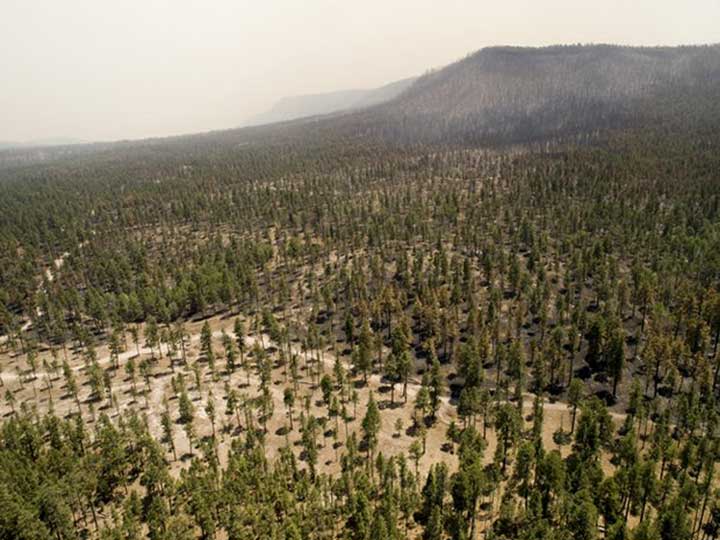
by Site Manager | Aug 18, 2011 | Taking Stock
Story by Dan Shell,
Managing Editor
Two months ago in this space I wrote about the lost opportunity reflected in the flames consuming northern Arizona’s pine forests, where the Wallow Fire was making national news as it spread to become the largest ever in the state and burned almost 600,000 acres before it was contained.
The column mentioned the Arizona-based Four Forests Restoration Initiative, a Forest Service project that seeks to treat forest health concerns on 2.4 million acres over the next 20 years, in the process producing a mountain of low-quality logs and biomass. Too late to make the issue deadline, project leader Henry Provencio of the FS responded to an email and confirmed PW’s position—that the biggest obstacle to the project’s full implementation and success is the lack of local markets for the material to be utilized as small sawlogs, board furnish or biomass.
Provencio noted that “demand for our, primarily, small trees has not been what we hoped, so implementation has been slow and expensive. In response to the situation, we asked industry what was needed for them to move back to northern Arizona. The reply was a long-term commitment of supply, sufficient to meet the investment we are asking them to make. In order for us to meet that kind of commitment and just as important, to meet the restoration needs of our forests we had to go big.”
Now, recent research completed by the FS and published in Canadian Journal of Forest Research shows that aggressive thinning treatments are the most effective in reducing the probability of crown fires in the Western U.S., with fuel treatments that leave 50-100 trees/acre the most effective.
Though the optimal number of trees/acre varies by site, species, terrain and other factors, the study shows that “Once again, an ounce of prevention equals a pound of cure,” says FS Chief Tom Tidwell. “Thinning dense forests reduces the impacts of the catastrophic wildfires we’ve already seen this year and…helps protect communities, provides jobs and promotes overall better forest health.”
Tidwell noted that while 38 structures burned during the Arizona wildfires, thousands more were saved by fuel treatments implemented by federal, state and local agencies and private citizens that successfully reduced fire behavior. Computer simulations used in the study evaluating multiple treatment types and stand densities showed that the most intense treatments were more effective in reducing the threat of crown fires.
Of course, having the information and knowledge acquired from research and using it the right way are two different things. Here’s to hoping the FS can use the study results to aid in the implementation of its long-term forest health project in Arizona that has the potential to create new jobs while promoting forest health.

by bcarter | Jul 1, 2011 | Taking Stock
Arizona Fire Reflects Opportunity Burning
Story by Dan Shell, Managing Editor
With wildfires burning out of control in northeast Arizona, spreading into New Mexico and parts of Colorado, Pascal Berlioux could be forgiven for exclaiming a loud “I told you so!” to those who oppose taking direct action to address forest health issues in Arizona and other parts of the U.S. West. In the region, ongoing drought and higher temperatures are combining with two decades of unmanaged public forest holdings to create a tinderbox just waiting for a lightning strike, a tossed cigarette butt or—in the Arizona Wallow fire’s case—an abandoned campfire to ignite years of forest fuel buildup thanks to overstocked, unthinned timber stands that are more susceptible to pest infestations and fire hazards.
Berlioux is the President and CEO of Arizona Forest Restoration Products, a group of investors who have pledged to build an OSB and OSL plant in northern Arizona near Winslow—if only public land managers could offer a degree of certainty that the mill could acquire the timber it needs to run.
The group’s plan would provide two major benefits: creating a source of jobs for the area at the plant, but perhaps most importantly the facility would bring a sizable forest products player to the area that could serve as a linchpin for small log and biomass utilization. In doing so, the facility would provide a critical market for low-quality timber and other material coming from public forests in the region, giving logging contractors and other landowners a much-needed destination for material that’s produced through timber stand improvement operations.
Like other regions of the Intermountain West, Arizona is facing forest health and wildfire concerns of epic proportions, covering millions of acres. In that state, the Four Forests Restoration Initiative, which is essentially a four national forest stewardship project on steroids, seeks to remediate forest health conditions on 2.4 million acres during the next 20 years. Long-distrustful stakeholder groups ranging from environmentalists to wise-use advocates have signed on to the project and pledged to make it work.
But the biggest obstacle to the project’s success (outside of preservationist legal challenges, which are always possible no matter what “consensus” is thought to be reached) is a commercial market for the biomass and solid wood products coming off affected timberland. Here’s why: Forest officials estimate costs for stand improvement average $1,000/acre. With 2.4 million acres in play, that’s a lot of thousands. And with deficit reduction the watchword for federal spending these days, there’s no way the Forest Service will be given the money to simply pay contractors for forest health improvement. It’s simply not gonna happen.
Without providing a commercial outlet for the material coming off those lands and financial incentive for contractors to go in and remove fuel, the forest health situation will instead be resolved “naturally” through a series of raging wildfires that damage wildlife habitat and water quality, not to mention some of the most beautiful landscapes America has to offer.
Meanwhile, Congress continues to fund firefighting instead of fire prevention and wise-use advocates and environmentalists warily try to hold hands in a forest health stewardship project lifeboat, wondering whose interests are going overboard. And all the while, opportunities to create jobs and improve forest health are burning.
Article by Dan Shell, Managing Editor Team Member Since 1988 Contact Information: Phone 334-834-1170, Fax 334-834-4525 Email
[email protected]
The monthly Panel World Industry Newsletter reaches over 3,000 who represent primary panel production operations.
Panel World is delivered six times per year to North American and international professionals, who represent primary panel production operations. Subscriptions are FREE to qualified individuals.
Complete the online form so we can direct you to the appropriate Sales Representative. Contact us today!
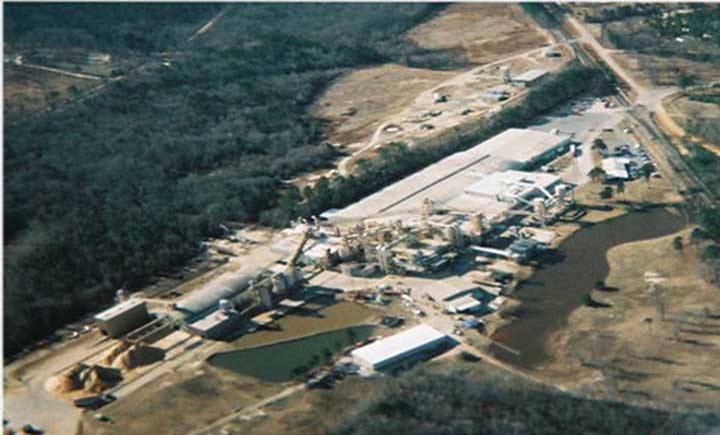
by Site Manager | May 1, 2011 | Taking Stock
Story by Rich Donnell,
Editor-in-Chief
One of the more aggressive companies in recent years is Flakeboard, the Canada-based manufacturer of MDF, particleboard, melamine laminated products and other value-added items. We’ve been hearing a lot about Flakeboard’s investment in several melamine laminating lines, but we were wondering about its primary manufacturing plants, especially the ones it purchased from Weyerhaeuser back in 2006, and most specifically of these the MDF plant at Malvern, Ark.
Sometimes we visit plants and, as Forrest Gump said, “you never know what you’re going to get.” Especially a plant like Malvern, which has been around since 1968 and operated under four owners. Frankly, Malvern had fallen off our radar, until recently when we heard they had done some work there. During these recessed economic times, the word that a mill “has done some work” causes the editors at Panel World magazine to perk up. We asked for a visit and Flakeboard most graciously opened its Malvern doors.
While we enjoy visiting brand spanking new greenfield operations (see Uniboard-Moncure article, May 2010), we really get a charge out of touring an older plant that has undergone significant work. This is certainly the case at Malvern. For example, the old Washington Iron Works presses have undergone a total makeover, and the sanding line is now totally modernized. Operators weren’t shy about expressing their exuberance with the upgrade work and with the look of the “new” board product flowing through the plant.
At Malvern there is a spirit of re-birth, for two reasons really:
A) Flakeboard has committed some serious dollars to improving technologies throughout the plant.
B) Flakeboard is committing some serious time to improving the work force culture.
A and B don’t necessarily go hand in hand; that is, we’ve visited many a plant that did A and ignored B. From an editor’s perspective, these plants don’t make for a very enlightening visit.
You don’t necessarily have to do A while doing B, but it would seem that the implementation of B will become more effective if it’s tied into A.
However it’s done, we seem to be seeing more plants concentrating on their work force culture. There are lots of definitions of work force culture, and I’m sure there are consultants who know the exact definition, but the common thread appears to be greater participation and accountability for the work force. Pushing responsibility and decision making down the ladder if you will. Flakeboard at Malvern has gone so far as to strike the term “supervisor” from its glossary.
Of course employee empowerment is not a new concept. And we’ve seen many companies who began to change its work force culture, only to have an economic recession or an economic boom cast aside the noble notion.
Flakeboard is not one of these companies. For Flakeboard, employee involvement is part of its business philosophy. The plant manager at Malvern, Tom Quesenberry, told us that what makes the new cultural shift at Malvern so interesting is that he can look at other Flakeboard plants where the culture is embedded and clearly see where Malvern is headed.
It’s amazing what you can do at a 43-year-old composite board plant.
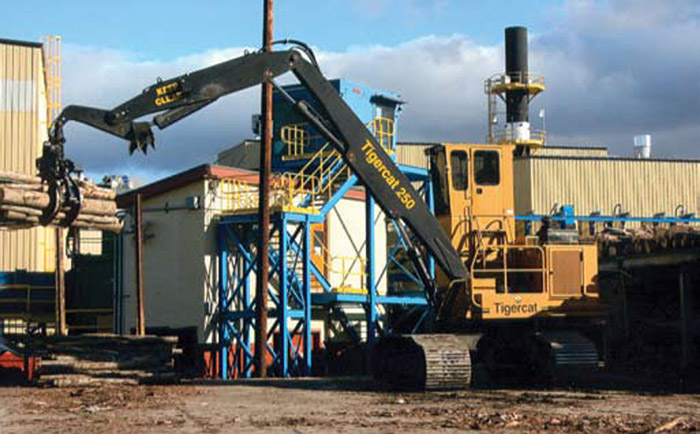
by Web Editor | Mar 26, 2011 | Taking Stock
EWP Producers Are Ready To Run
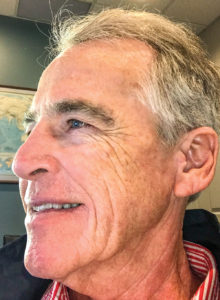 Article by Rich Donnell, Editor-in-Chief, Panel World (2011)
Article by Rich Donnell, Editor-in-Chief, Panel World (2011)
You’ll notice a short article in this issue on the current state of engineered wood products. One of the comments I’ve heard to best sum it up comes from Brian Luoma, Vice President, Engineered Wood Products, Louisiana-Pacific Corp. Luoma said, “We’ve built this great race car. We’re ready for the race to begin.”
Luoma was referring to LP’s plant at Houlton, Me., which was one of LP’s early OSB plants, but which in recent years LP has converted to laminated strand lumber (the plant can still produce OSB). The product is intended to complement as well as substitute for certain LVL applications, and obviously for lumber applications. LP is excited about the plant, about the product, and about its people who are behind it. But as Luoma alluded to, the building products market needs to pull in the yellow flag and start waving the checkered one. Many EWP producers are in this same fix. Waiting. The challenge is a little steeper for LP, in that while traditional EWP producers, including LP, are waiting for the market to pick up steam, LP is also waiting to see how its new product will be received in a real builders market.
I’ve always compared the competition within the EWP industry to a chess match. To even sit down at the table you have to know what you’re doing; understand all the pieces and know their capabilities and limitations (the knight can do what?); quickly form an idea of how your EWP competitor is approaching this same match. The game often progresses very slowly, incrementally, delicately. Your best laid plan may be stymied and you have to regroup. Or perhaps your plan continues to evolve with absolute clarity until you’ve forced your opponent into an inescapable corner, and maybe even before he knows it. Alas, but there can be sudden surprises. A flurry of activity. You’ve overlooked something—the knight no less. Just when you thought you were winning the day, the day is lost.
Meanwhile, the traditional commodities guys have been slugging it out on the checkers board. A lot jumping and crowning. This is the third day at Gettysburg mentality—Pickett’s charge! Here I am and I’m coming. Well, here I am, come on. When the checkers game ends, the two opponents drink out of the same pond. When the chess match concludes, the opponents, win or lose, return to their respective laboratories to make themselves better.
But I get the sense that the EWP producers are about fed up with all of this jostling for position. They’re tired of playing scrimmage games against each other. They’ve fine-tuned themselves about as finely as they can. To return to Luoma’s analogy, they’re ready to see how they’ll perform in the big race.
The monthly Panel World Industry Newsletter reaches over 3,000 who represent primary panel production operations.
Panel World is delivered six times per year to North American and international professionals, who represent primary panel production operations. Subscriptions are FREE to qualified individuals.
Complete the online form so we can direct you to the appropriate Sales Representative. Contact us today!
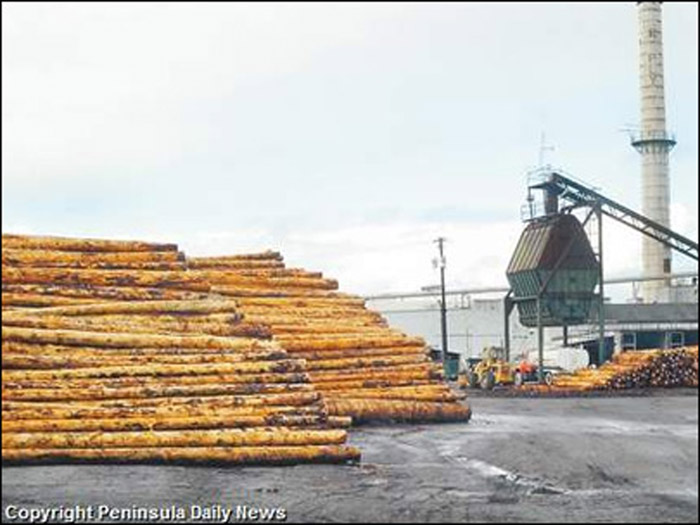
by Web Editor | Jan 26, 2011 | Taking Stock
Old Plywood Mills Don’t Always Fade Away
Article by Rich Donnell, Editor-in-Chief, Panel World January 2011
EDITOR’S NOTE: The following is an edited excerpt from the publication entitled “From Penply To K Ply,” one of a series of monographs produced by the Plywood Pioneers Assn. It complements this issue’s cover story.
They came from mill towns across western Washington and Oregon—the seasoned plywood production men who founded Peninsula Plywood Corp. in 1941. PenPly began as an idea in the minds of two Hoquiam, Wash. men, Oscar Groth and Carl Stromberg. Working together in the machine shop of the Polson Logging Company near Hoquiam, they discussed the success of worker-owned plywood mills such as Olympia Veneer. They looked throughout western Washington and western Oregon for a suitable manufacturing site “near a supply of peeler logs.” Port Angeles was one of the first locations considered.
Early in 1941, a team drawn from potential shareholders made a three-week tour of Northwest communities to promote the idea of a new mill. The team included Emory Moore, a salesman who agreed to serve as PenPly’s president during the construction phase and who later was to rise to national leadership in the plywood industry; Loren Haugen, who was to become the corporation’s chief engineer, and who in later years was to head up his own mills in Roseburg and Medford, Ore.; Carl Jacobson, who was to serve as vice president, then production superintendent, and in later years become a principal of Southern Oregon Plywood, Grants Pass, Ore.; and Herman Halvarson, who was to be the first treasurer.
On April 13, 1941, Peninsula Plywood Corporation was formally organized in Longview, Wash. The corporation was registered with the state of Washington in papers showing $500,000 capital on the basis of 350 shares of common stock at $1,000 per share and 1,500 shares of preferred stock at $100 par value per share. Each of the common shareholders was to have one vote in the organization, work at an equal wage, and receive income from a wage scale that could fluctuate according to market ups and downs.
From the beginning, PenPly called itself a “semi-cooperative.” Although 350 shares of common stock were authorized, only 285 shares were issued as there were to be only 285 jobs available at startup. The initial wage was $1.25 per hour, of which 25 cents was withheld and applied to mill capital.
The Port Angeles Evening News estimated that 75% of PenPly’s original stockholders were Scandinavian born or of Scandinavian descent. The majority of the worker owners at PenPly had extensive previous plywood manufacturing experience in Washington and Oregon.
The late Clarence Flatau recalled the huge challenge faced by the ordinary working man in raising the $1,000 needed to buy a share in 1941. Interviewed in 1971, Flatau described making an initial deposit of just $5 to treasurer Halvarson, who accepted it with obvious confidence that Flatau would soon come up with the rest of the money. He did this by selling his car and borrowing the rest.
For Flatau and many others, that hard-won investment would eventually prove to be worth far more than any of the pioneer shareholders could have imagined. A PenPly working share of $1,000 in 1941 grew to be worth $300,000 in 1971, counting job income and appreciation in share value.
The monthly Panel World Industry Newsletter reaches over 3,000 who represent primary panel production operations.
Panel World is delivered six times per year to North American and international professionals, who represent primary panel production operations. Subscriptions are FREE to qualified individuals.
Complete the online form so we can direct you to the appropriate Sales Representative. Contact us today!







 Article by Rich Donnell, Editor-in-Chief, Panel World (2011)
Article by Rich Donnell, Editor-in-Chief, Panel World (2011)